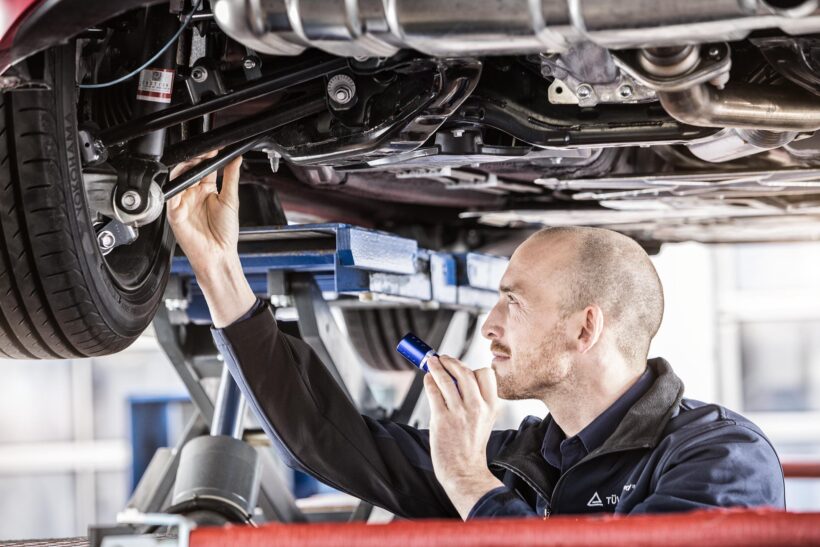Are you searching for the right car but feeling overwhelmed by the many choices available? Don’t worry – we’ve got you covered! Finding the perfect car can be difficult, but if you know how to choose, you can get a good deal.
Today’s article will provide ten simple steps to help you find the perfect auto and have the vehicle of your dreams.
Let’s get started.
1) Define your needs

This means considering what you will primarily use the car for and what features are most important to you. For example, will you be using the car for commuting? Road trips? Hauling large items?
Once you clearly understand your needs, you can narrow your search to the automobiles that meet them. Next, consider your lifestyle, such as how many passengers you typically have or if you need a vehicle with good gas mileage.
By taking the time to define your needs, you’ll stand a better chance of finding a car that fits perfectly into your life.
2) Do your research
Before making any major purchase, it’s important to do your research. Spend time browsing different car models and their features.
Look up customer reviews and ratings to get an idea of how each auto performs on the road. You can even check out safety ratings and fuel efficiency to make sure you’re getting the most for your money.
3) Consider your budget

When buying an auto, you want to ensure you’re not breaking the bank. You should know what you can afford before you start shopping. Look at your monthly expenses and determine how much you can put towards a monthly car payment. Remember to factor in the cost of insurance, gas, and maintenance.
Once you have a budget, you can start narrowing down your options. Focus on automobiles within your budget that still meet your needs.
Remember that a higher price tag doesn’t always mean better quality. You can find great deals at affordable prices if you do your research and take the time to shop around. And remember to consider used cars, as they are more affordable.
4) Compare prices
Now that you’ve researched and know what model you want, it’s time to compare prices. Don’t settle for the first deal that comes your way. Instead, check out multiple dealerships, private sellers, and online marketplaces to get the best deal possible.
Don’t forget to factor in other costs like taxes and registration fees. Feel free to negotiate and see if you can get a better deal.
5) Get pre-approved for financing
Before heading to the dealership, getting pre-approved for financing is a good idea to clearly understand what you can afford. You can start by checking with your bank or credit union to see their rates and terms.
You can also use online tools to compare different loan options. Getting pre-approved can save you time and hassle at the dealership, giving you more bargaining power when negotiating the price. So take a few minutes to get pre-approved and get one step closer to driving off in your dream auto!
6) Find the right dealership

Look for a dealership that has a good reputation and positive customer reviews. If you’re buying a used car, use PhoneHistory to see if the details the seller mentioned about himself/herself add up with what you will find on the website.
Additionally, consider the location and convenience of the dealership. For example, are they close to your home or workplace? Do they offer any perks like free oil changes or shuttle service?
Remember, you’ll interact with them for the duration of your ownership, so it’s important to feel comfortable with the dealership and its staff.
7) Inspect the car

Once you’ve found an auto that seems like a good fit for you, it’s time to inspect it thoroughly. Don’t just take the seller’s word that the vehicle is in good condition. First, check the exterior for any dents, scratches, or rust. Then, look under the hood and check the fluids and the condition of the belts and hoses.
Test the lights, signals, air conditioning, and heating. Next, make sure the tires have enough tread and are evenly worn. Finally, take the vehicle for a spin and listen for any unusual noises or vibrations. When you’re taking a test drive, pay attention to the following things:
- How does the car feel? Is it comfortable? Is there enough legroom and headroom for you and your passengers?
- How does it handle on the road? Does it feel stable?
- How is the visibility? Are you able to see clearly from all angles?
- How does the car accelerate and brake? Is it smooth and responsive?
- How are the sound system and other features? Are they easy to use and of good quality?
Be bold and ask the seller questions about any issues you find, and consider getting a second opinion from a mechanic if you need more clarification.
8) Get a vehicle history report

This report can tell you a lot about the car’s past, including any repairs, accidents, and title transfers. It can also alert you to issues like flood damage or salvage history.
Fortunately, getting a vehicle history report is relatively easy. You can often find them online by entering the car’s vehicle identification number (VIN). Some popular providers are Carfax, AutoCheck, and VINCheckPro.
Once you have the report in hand, take the time to review it thoroughly. Look for any red flags, like multiple accidents or frequent repairs. While a clean history report doesn’t guarantee a problem-free automobile, it can give you peace of mind knowing you’re making an informed decision.
If the car you’re interested in has a murky history, feel free to walk away. Remember, plenty of other vehicles out there could be a better fit for you. And if you do decide to move forward, use the information from the history report to negotiate a fair price and ensure you’re getting a good deal.
9) Ask about rebates and incentives
These can help you save money on the overall cost of the auto, making it a more affordable option for you.
Rebates and incentives come in many forms, from cash-back offers to special financing rates. Some may be available through the dealership, while the manufacturer may offer others. Therefore, it’s important to do your research and ask about all available options to see which ones you qualify for.
Keep in mind that not all rebates and incentives are created equal. Some may have specific requirements, such as purchasing within a certain timeframe or financing through a certain lender. Read the fine print and understand all the terms before taking advantage of any offers.
10) Evaluate your trade-in
If you’re trading in your current car to purchase a new one, you want to ensure you’re getting a fair deal. Start by researching the value of your auto online, using websites like Kelley Blue Book and Edmunds. Then, consider any repairs or maintenance you’ve recently done that might add value to your trade-in.
You should also clean your automobile inside and out to make it more attractive to potential buyers. And remember, if you’re unhappy with the trade-in offer, you can always sell your car privately for a better price.
Final Thoughts

Finding the right automobile may seem daunting, but by following the above tips, you’ll be well on your way to owning a car that fits your needs. Remember to take your time, research, and never be afraid to walk away if a deal doesn’t feel right.

